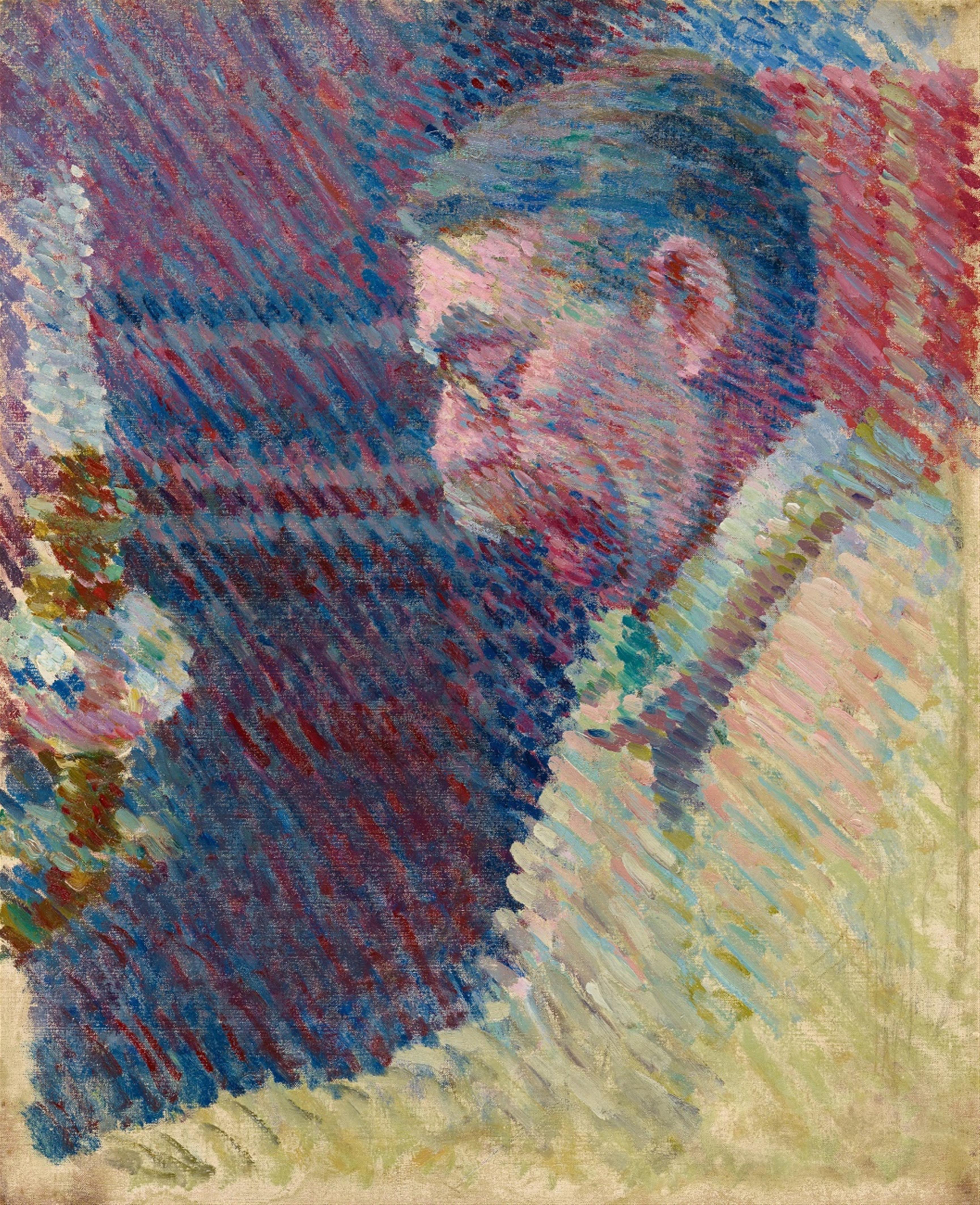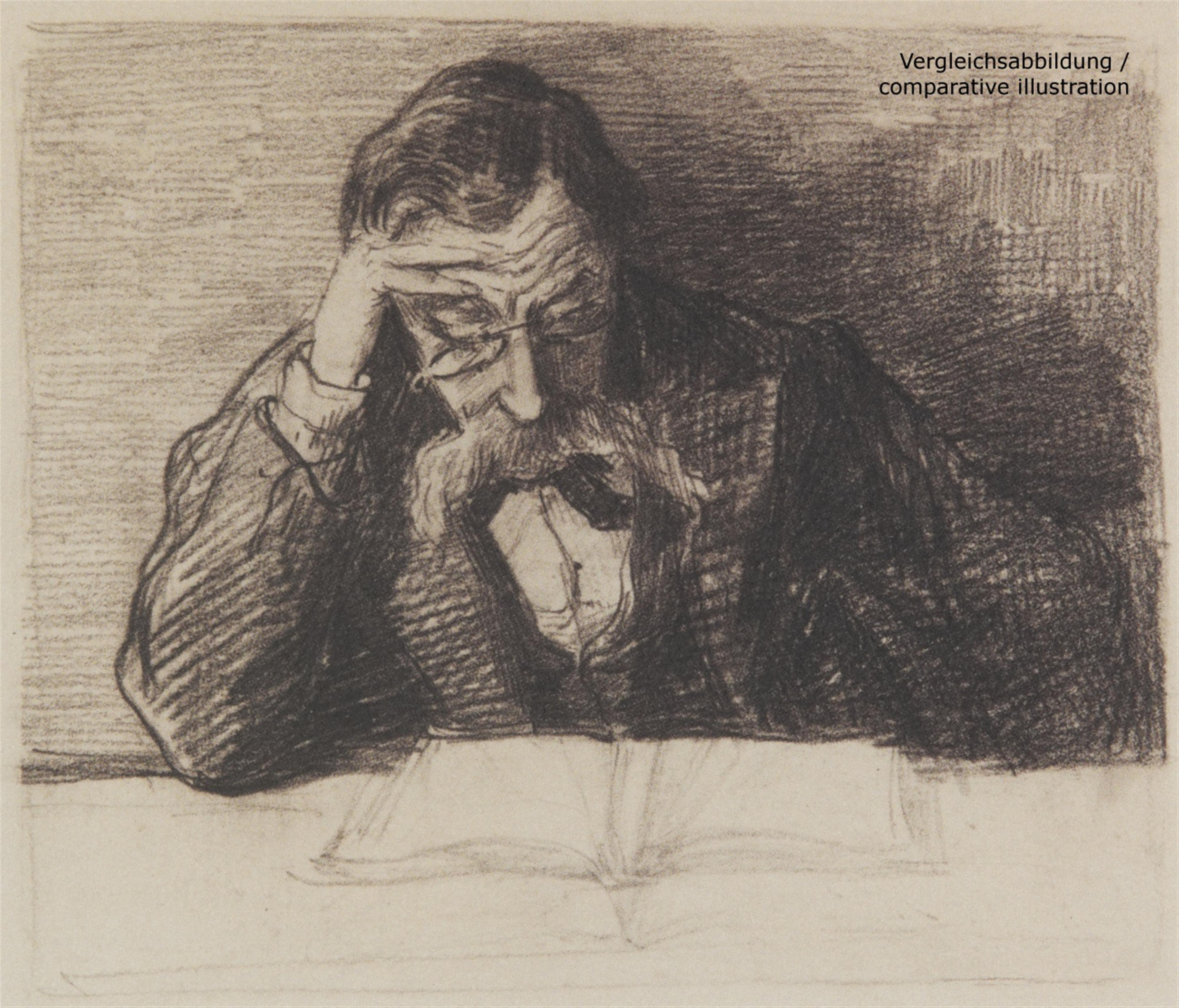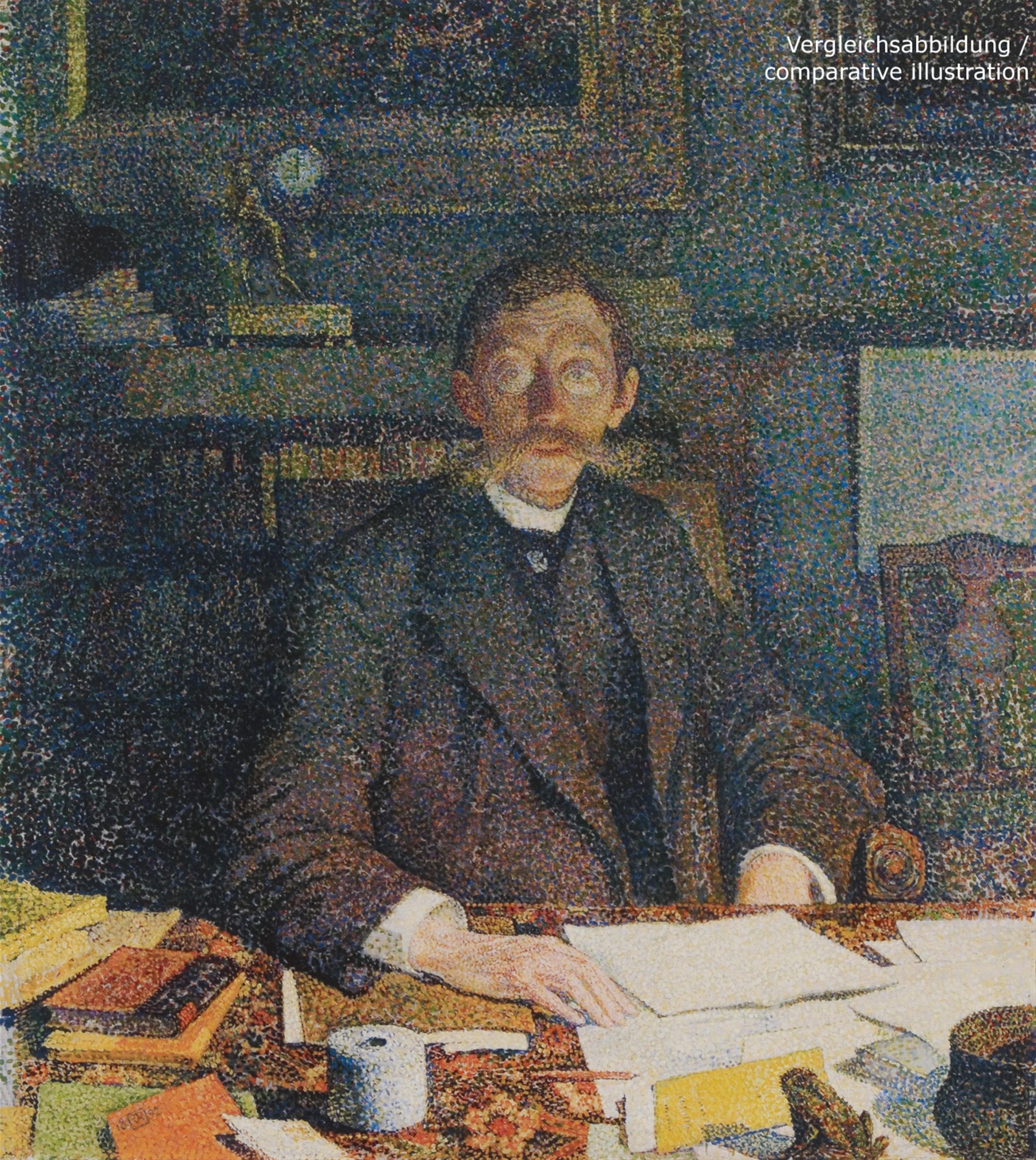Louis Hayet
Émile Verhaeren
Circa 1894-1896
Oil on canvas 61.1 x 50 cm Framed. Inscribed "LOUIS HAYET" in black verso on upper bar of the chassis to the left. - The canvas corners each pierced in places; partially with few retouches. In fine condition.
The painter Louis Hayet, who was born in Pontoise, may be among those Neo-Impressionists who are little known outside of France today. However, in Paris, from the late 1880s he and his style influenced by pointillism and divisionism made him one of the more important artists of the younger generation in the circle around Camille Pissarro. He was friends with his fellow painters Lucien Pissarro, Paul Signac and Georges Seurat, who were of the same age.
The important Belgian poet, writer and art critic Émil Verhaeren may have met Hayet within this circle. As a progressive writer Verhaeren followed developments in the visual arts with the greatest interest. He was familiar with painters like Seurat, Signac, Whistler, Pissarro and van Gogh through the exhibitions of “Les XX” and “La Libre Esthétique”, and he was also linked to some artists by very close friendships and artistic collaborations, not least with Théo van Rysselberghe (see comparative ill.) and Henry van de Velde.
Émil Verhaeren quickly found an enthusiastic audience among comparable artistic circles in Germany through Stefan Zweig and the publishing activities of Anton Kippenberg. Zweig translated his French works, the poems and pieces for the theatre, into German. He had first met Verhaeren while a young man, at the Brussels studio of the sculptor Charles van der Stappen. Van der Stappen was working on a bust of the poet. The man's personality and his characteristic physiognomy immediately made a strong impression on Zweig: “this face […], this unforgettable, the high forehead, already furrowed seven times by the lines of bad years, the rust-coloured brown curl falling down above it, the hard structure of the face tightly drawn by the brownish wind-weathered skin, the chin jutting out like a rock and, above the narrow lips, hangs the great and mighty Vercingetorix moustache. [...] In those three hours I had already learned to love this person as much as I would then love him my entire life.” (Stefan Zweig, Die Welt von Gestern, Erinnerungen eines Europäers, Stockholm 1942, Neuauflage (Fischer Taschenbuch), Frankfurt 2016, pp. 147/148).
Stefan Zweig esteemed his friend alongside fellow poets like Paul Valéry or Rainer Maria Rilke as one of the most important of his modernist contemporaries. He considered Verhaeren to be the intellectual representative of the old and the future Europe. In his memoirs published in 1942 he writes:
“Verhaeren was the first of all the French poets to attempt to give Europe what Walt Whitman gave America: an affirmation of his time, an affirmation of the future. [...] 'Admirez-vous les uns les autres', was his appeal to the peoples of Europe. All the optimism of our generation, that optimism which has long since ceased to be comprehensible in the present period of our most horrific regression, found its first poetic expression in him, and a few of his best poems will long continue to testify to the Europe and the humanity which we dreamed of at that time.” (ibid., p. 145).
Provenance
Private collection, France
Literature
Rik Hemmerijckx et al. (ed.), Ausst. Kat. Verhaeren. Een dichter voor Europa/Un poète pour l'Europe, Emile Verhaerenmuseum Sint-Amands 2016, with illus. p. 66
Exhibitions
Sint-Amands, Belgien 2016 (Emile Verhaerenmuseum), Verhaeren. Een dichter voor Europa/Un poète pour l'Europe






